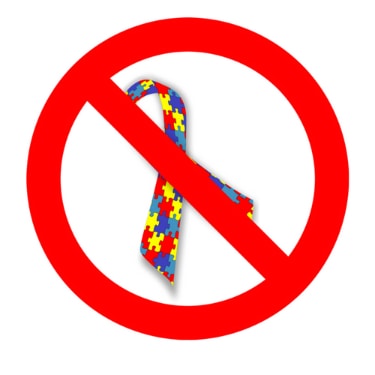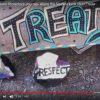KJIPUKTUK (Halifax) – This year, to observe “Autism Awareness & Acceptance Month” (see my previous article for my thoughts on that), Autism Nova Scotia is suggesting people use the hashtags “#ShineBlueNS” and “#AgentofChangeNS”.
#ShineBlueNS is lifted from Autism Speaks’ long-running “Light It Up Blue” campaign, which many Actually Autistic people despise. I’ll address this in a future article, but today I want to discuss the hashtag #AgentofChangeNS.
Autism Nova Scotia’s Video Project Club has created a short film, created by autistic adults, called “Agents of Change”, a superhero parody that explores the strengths and abilities of autistic people. (And kudos to them for their work in furthering autism acceptance!) In accordance with this, Autism Nova Scotia has created this list of ideas for businesses, government agencies, schools and other groups and organizations to become more accessible to autistic people.
Some of the ideas include:
- “autism-friendly” shopping hours;
- priority check-out lines to reduce waiting, anxiety and sensory overload;
- more inclusive hiring practices;
- visual supports to help autistics have better experiences at work or in other public places;
- providing “quiet areas” for autistics to go if they’re overwhelmed;
- hosting an “autism awareness” presentation;
- posting Autism Nova Scotia’s Autism Awareness & Acceptance Month poster in a window or at the checkout line or waiting room;
- using their hashtags mentioned above;
and other things.
While most of them have good intentions; they do not go far enough. In fact, these are the kinds of things Autism Nova Scotia has been suggesting for years. In order to be a real “agent of change”, there are many other things that the radical activist autistics would recommend as well. Here is my list of fifteen things you can do to be a #RealAgentofChangeNS:
- Listen to the real experts! The only experts on autism are autistic people themselves, not the non-autistic parents and professionals! Pretty simple concept!
- Support autistic-run organizations. The mainstream autism organizations are almost completely dominated by non-autistic people. But the ones that are run by actually autistic people are much more respected in the autistic community. These include the Autistic Self-Advocacy Network, Autism Women’s Network, Canadian Autistics United, and A4A Ontario.
- Learn about autistic culture. Autistic adults and especially autistic children need to be exposed to their shared history, and the way their fellow autistics move, communicate, create, experience and understand the world in their own unique ways. Stay tuned for an upcoming article on the elements of autistic culture.
- Ditch the word “awareness” from your vocabulary and switch to “acceptance”. The last article I wrote explains the differences between the two concepts, which, as mentioned, you can read here.
- Learn the differences between the medical model and social model of disability. This infographic by Erin Human explains the differences very well.
- Say the words – “Autistic”, “Disabled”, and forget about “differently abled” or “special needs”! There’s no shame in being autistic or disabled, and it DOES define us! Obviously it’s not the only thing about us, but they’re very important parts of us. Labels can be empowering and a source of pride!
- Stop using functioning labels. Terms such as “high-functioning autism” or “low-functioning autism”, “mild autism” or “severe autism” are ableist and dehumanizing. Every autistic person has weaknesses and strengths that should be respected, no matter what others think we can do.
- Understand that there’s more than one way to communicate. So many non-autistic parents are anxious to hear their autistic children say “I love you”…through oral speech, of course. But focusing too heavily on the development of oral speech isn’t always the best idea. There are many other valid forms of communication, such as typing, Augmentative & Alternative Communication (AAC), Facilitated Communication (FC), sign language, and behaviour. And as this post from Respectfully Connected says, there are many ways to say “I love you”.
- Stop tech shaming. We as a culture seem to have an unhealthy obsession with shaming people, especially youth, for spending too much time on their electronic devices. But for many autistics, this is the best way for us to socialize comfortably and without anxiety. Social media, Minecraft, and other things give many disabled people access to the world and allow us to connect with other people in the autistic and disability communities.
- Ask yourself what “appropriate play” really means. One aspect of early intervention for autism is developing the autistic child’s play skills. Of course, they never say it, but if they talk about children developing more “appropriate” play skills, what they really mean is neurotypical, or non-autistic, play skills. But just because they may not be playing with toys in the same way as their non-autistic peers, that doesn’t mean it’s the wrong way to play. See this great piece from Respectfully Connected on the concept of “parallel play”.
- Let autistic kids be kids! Similar to the last point, it’s quite common for parents of autistic children to take their kids’ favourite things and turn them into “therapy” or make them “teachable moments”. But autistic kids don’t need to spend every waking minute being subjected to some kind of “therapeutic intervention”….they need to be free to explore and discover the world in their own way like other kids. See this post from Court Allison for more.
- Educate yourself on intersectionality. A term coined by legal scholar Kimberlé Crenshaw, intersectionality is a framework for understanding how all the various aspects of our identities overlap and influence each other, and how problems like racism and sexism often overlap to create multiple levels of social injustice. There’s a vast amount of diversity in the autistic and disability communities, and this by extension can mean that autistic or disabled people of colour, LGTBQ autistics or disabled people, etc. often face multiple levels of discrimination and marginalization. In the words of poet and civil rights activist Audre Lorde, “There is no such thing as a single-issue struggle because we do not live single-issue lives.”
- Don’t ignore non-speaking autistics! Similar to point 8, autistics who don’t communicate with oral speech do communicate in other ways. There is a tendency, even among some autistic people, to look down on non-speaking autistics or autistics who are more disabled or need more support than others. But there are many non-speaking and part-time speaking autistics who are extremely well-known activists, including Amy Sequenzia and Cal Montgomery.
- Start challenging the non-autistic parents and professionals, and the mainstream autism organizations. The discourse on autism has been dominated by non-autistic people for far too long, while actually autistic people, especially the more radical activist ones, are often shut out of mainstream discourse. While small changes are happening, there is still a long way to go on this front, especially in Canada. But with groups like Canadian Autistics United and A4A Ontario, the radical voices are getting louder by the day.
- Honour the lived experiences of autistic people. Empirical research and professional expertise has the potential to further contribute to our oppression. In particular, people who have experienced various types of behavioural intervention often discuss how problematic these interventions are, but their experiences are often dismissed as “anecdotal” by the so-called professionals. But this is also an area where things are rapidly changing. I’ll be doing another article on this soon.
In addition to these 15 things, the mainstream organizations can do something else that’s very, very important. They can acknowledge that they chose to ignore the autistic community and neurodiversity movement for a long time. Autistic-run organizations, and the radical activist autistic culture and communities have been around since before the mainstream organizations even existed. There’s a tendency to suggest that the autistic community needs to promote itself more, but it’s not a failure on the part of autistic people that they’ve been ignored for so long. Rather, it’s the fault of the mainstream, heavily-corporate-funded, neurotypical-run organizations that they haven’t bothered to look.
If you can, please support the Nova Scotia Advocate so that it can continue to cover issues such as poverty, racism, exclusion, workers’ rights and the environment in Nova Scotia. A pay wall is not an option, since it would exclude many readers who don’t have any disposable income at all. We rely entirely on one-time donations and a tiny but mighty group of dedicated monthly sustainers.




